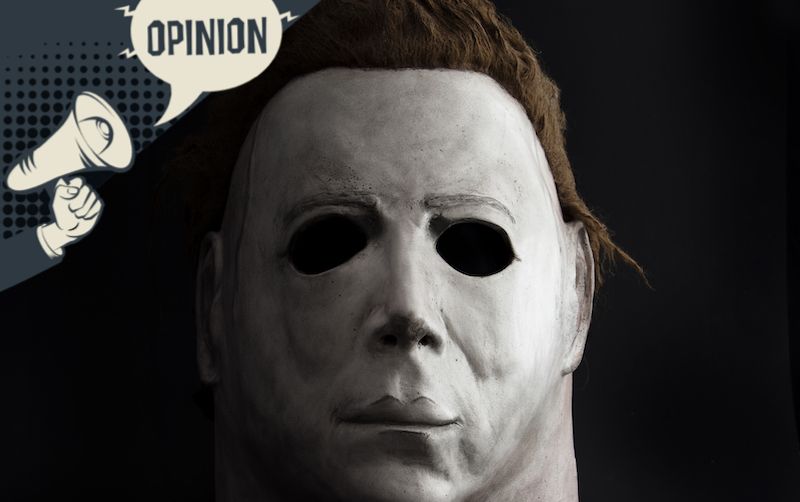


“What?” exclaims a character at one point in Halloween Kills on being informed masked killer/William Shatner enthusiast Michael Myers is still at large.
Coincidentally, this was my response upon learning there was going to be a sequel to 2018’s Halloween - the surprisingly great follow-up to the 1978 original, which used the first film to tell its own story about how one woman’s trauma had reverberated through three generations of her family.
What made David Gordon Green’s re-contextualising of the original stand out from lesser entries in the Halloween canon was the way it seemed determined to tell a story about something, like all the best horror - and most importantly, it seemed to end definitively, content that its story had been told.
That was until Blumhouse announced they’d inked a deal for two more films and Michael would be waking up from his fiery slumber rearing to go again.
‘Halloween Kills’ is the middle chapter in this new trilogy, and middling is indeed the best description, presenting a story that has interesting new ideas but traps them in a far more mundane film than they deserve.
The key issue is this: as well as slashing through what must be an increasingly small population in Haddonfield, it also feels like Michael Myers has slashed the film itself down into two very unwieldy halves.
One half is intriguing - where the first film focused on a single family’s trauma through the ages, this film focuses on what trauma and legend does to an entire town, as the children who witnessed the boogeyman in the 70s lead a lynch-mob after Michael Myers.
Jamie Lee-Curtis also gets a nice rest from the first film in a hospital bed, and has quite a moving chat about what sort of life she could have had, had she not committed her entire life to the man who hurt her over 40 years ago.
Looking at the other dismembered chunk of the film though, we have Michael’s little trip through Haddonfield, as he explodes veins and ricochets gunshots back in people’s faces.
In fact, he’s borderline superhuman this time round; he’s Terminator if Arnold Schwarzenegger ditched the shades and went for the ‘I found this mask in a pound shop’ look.

Pictured: "...the most chilling shots of Michael are as he simply stalks a bridge, scouting out prey, a man with nothing else on his mind but an intention to get you."
For a film that is so reverent of the 1978 version, going so far as to recreate it faithfully in its opening flashback, it’s odd how little it understands what was frightening about it.
There are bits when it gets it - the most chilling shots of Michael are as he simply stalks the woods or a bridge - soft footsteps, scouting out prey, a man with nothing else on his mind but an intention to get you.
But then there’s extended shots of Michael just brutalising people like a machine, buzz sawing his way through the town in a way that often focuses far more on carnage, and ignores the fact that the sharpest part of the 1978 film was never the knives and the blunt objects - it was the mastery of slow, lingering dread.
And it's this space between the film’s ideas and its lacklustre horror that the issue rests.
It has a lot to say about the nature of fear, with the characters given big, trailer-filling monologues about evil - but because the film’s not scary itself, it becomes hard to connect with any of this pondering on an emotional level.
Uneven though it may be however, there is still fun to be had this witching hour. On the soundtrack, John Carpenter, along with his son Cody and musician Daniel Davies, taps away on those classic three notes, blending them with all kinds of glorious synthesised monstrosities and making sure that familiarity doesn’t breed comfort.
Jamie Lee-Curtis also continues putting in her all to the character of Laurie Strode - seeing her at peace for a short while, trying to come to terms with what’s happened is one of the most effective parts of the film.
And I’ll always give a film credit for trying to be interesting - having sat through all the Halloween films, it’s always a mercy to realise this is one where the filmmaker has something to say, even if they struggle to articulate it through the noise of heads being bashed in.
But where the 2018 film made me glad Michael came home, this time round, I’m asking if maybe it's best that he stays there.
Well, unless someone jumps out of the shadows and surprises me again...